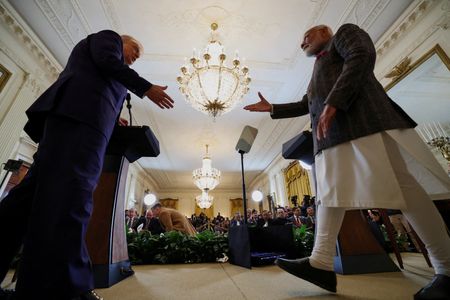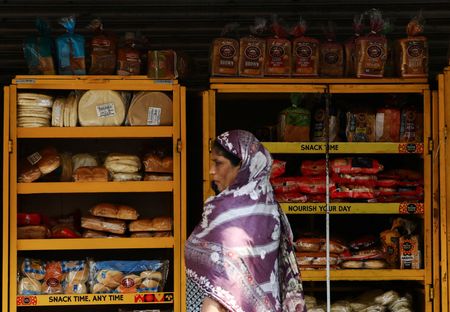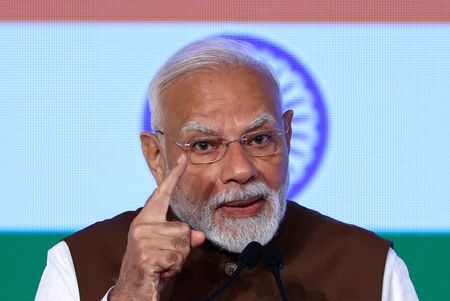By Nimesh Vora
MUMBAI (Reuters) – The Indian rupee inched lower on Wednesday with focus remaining on U.S. tariffs, while near-term implied volatility hit multi-month lows, signaling that traders see limited risk of a large decline in the Asian currency.
The rupee was trading at 88.1250 per U.S. dollar at 12:02 p.m. IST, down from 88.1025 on Tuesday and just 0.2% shy of its record low of 88.36 hit last Friday.
The currency in late August weakened past 88 per dollar for the first time, sparking expectations of a sharp fall. That has not materialised so far. An increase in implied volatility after the currency drop has also faded.
Typically, when a currency is near all-time lows, traders brace for larger swings and implied volatility tends to rise.
The 10-day realized volatility has been holding below 4%. Tracking this relative calm, one-month implied volatility has declined to levels last seen in March.
The subdued expectations for near-term swings despite the rupee hovering near lifetime lows reflects in part the stabilizing role of the Reserve Bank of India’s intervention, bankers say.
Corporates have been steadily selling volatility, “and RBI has done an excellent job in managing spot,” an FX derivatives trader at a private sector bank said, “That is why implied volatility keeps falling.”
ALL ABOUT TARIFFS
Rupee traders are squarely focused on U.S.-India trade relations, a key driver for the currency’s near-term direction. On this front, developments offered a mix of positive and negative signals.
U.S. President Donald Trump said on Truth Social that Washington and New Delhi are continuing negotiations to address trade barriers, expressing confidence in a successful outcome.
At the same time, he pushed the European Union to impose tariffs of up to 100% on India over their purchases of Russian oil, a move that could add fresh pressure on the rupee.
(Reporting by Nimesh Vora)











